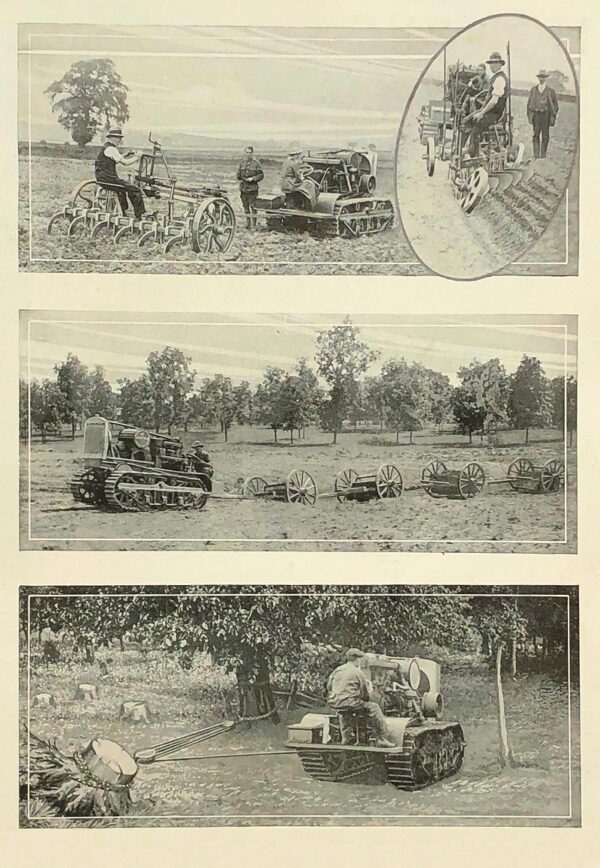
We start this week’s Snapshot with a small recap: Snapshot 358 showed a tracked 1908 Hornsby 20HP Heavy Oil Tractor, nicknamed the Caterpillar by soldiers who saw it on trials with the British War Office. By 1911, the War Office was no longer interested, and the patents were sold to the Holt Manufacturing Company in America for £4,000. Learning of the Hornsby’s nickname, Holt registered “Caterpillar” as a trademark in 1911. Holts later merged with C. L. Best and became the Caterpillar Tractor Company.
Our Snapshot now takes us forward to 1919. The American publication Power Wagon Reference Book for 1919 shows an advertisement for Holt’s Caterpillar (of Peoria and Stockton, Illinois), accompanied by a blueprint of their Model 45 tractor, and a statement that the “Caterpillar” tractor was invented by Benjamin Holt for the American farmer. No Trade Descriptions Act in 1919 then… There was also a severe warning that the trade name could only be applied to tractors made by Holt. (The generic American term is crawler tractor.)
On the next page of the book is an advertisement for tractors by the Monarch Tractor Co. of Watertown, Wisconsin that look very like Caterpillars but of course could not be named as such. But they have better pictures than Caterpillar. And their model names were delightful: “Lightfoot” 10-6 H.P., “Neverslip” 20-12 H.P. and “Neverslip” 30-18 H.P.
Their advertisements, found in ‘our’ book and in Chilton Tractor Journal and Motor Age between 1918 and 1922, were of the highest quality, often showing their vehicles cresting incredibly muddy farm field summits in fine style. Mentioned were the many terrains that Monarchs could negotiate, impossible for other tractors, and the fact that ‘they do not pack the soil.’ Finally, Monarch vaunted seven years of development, that the allies had bought most of their 1918 output, and that Government engineers adopted Monarch tread for their largest tanks.
Our Snapshot is from the page facing the actual advertisement and shows images of Monarch tractors at work, hoeing, ploughing, seeding (we think) and even pulling tree stumps.
In 1928, Allis-Chalmers acquired the Monarch Tractor Company, by now said to be based at Springfield, Illinois after they opened a plant there in 1925. Allis-Chalmers thus added crawler tractors to their range. The last Monarch tractor model was built in about 1930.







Leave a Comment